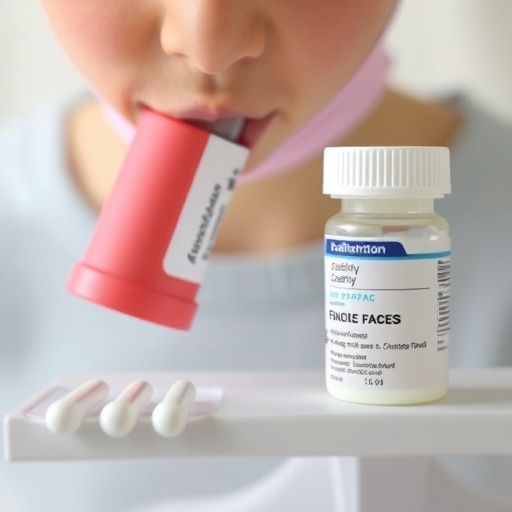By preparing antibodies from clonally expanded peripheral blood plasmablasts from Kawasaki disease children, antigens of a previously unidentified virus targeted by the antibody response to the disease have been identified
BALTIMORE – A new study identifies antigens targeted by the antibody response of children with Kawasaki Disease (KD). Findings will be presented during the Pediatric Academic Societies (PAS) 2019 Meeting, taking place on April 24 – May 1 in Baltimore.
“To identify antigens targeted by the antibody response of children with KD, we identified plasmablasts that were clonally expanded in the peripheral blood of 11 children with KD and made monoclonal antibodies from these plasmablasts,” said Anne Rowley, MD, one of the authors of the study. “Monoclonal antibodies from nine of the 11 patients identified intracytoplasmic inclusion bodies in ciliated bronchial epithelium of fatal KD cases. A subset of these antibodies recognizes peptides from a hepacivirus non-structural protein, and an optimized peptide blocked binding of these antibodies to the inclusion bodies, demonstrating the presence of a hepacivirus-like protein in the inclusion bodies. These results strongly suggest that a new human virus, closely related to the hepaciviruses and with a respiratory portal of entry, is etiologically related to KD.”
The study isolated peripheral blood (PB) from KD children 1-3 weeks after fever onset, and characterized the response using single cell RT-PCR. It identified oligoclonal PB sets and highly mutated IgA PB, and generated monoclonal antibodies from these PB. It used the monoclonal antibodies to evaluate reactivity to KD tissues and to a peptide array comprising 29,939 peptides derived from 13,123 B cell epitopes of animal viruses reported in the Immune Epitope Database and Analysis Resource.
The study sequenced 1,156 PB from 11 KD patients, and identified 44 sets of oligoclonal PB in these patients. It prepared 61 monoclonal antibodies (Mab) from oligoclonal PB and from IgA PB that showed high levels of somatic mutation. Ten of these antibodies strongly bind to KD ICI, and 23 weakly bind. Animal virus peptide array revealed that Mab KD4-2H4 (from patient KD4), which strongly binds ICI, recognized multiple similar peptides from a nonstructural protein of hepacivirus C with an identified motif that was highly significant at e-118. Patient KD4 had negative hepatitis C serology. Peptide substitution analysis was performed to identify optimal amino acids for binding of KD4-2H4 at each position. ELISA using an optimized peptide revealed that four other KD Mab from two additional KD patients also recognized this peptide; all three patients had coronary aneurysms. The strong ICI binding of KD Mabs KD4- 2H4 and KD6-2B2 was completely blocked by pre-incubation with the optimized peptide.
Children with KD make antibodies to hepacivirus peptides, and KD ICI contain protein with a hepacivirus-like epitope. These results strongly suggest that a new human virus, closely related to the hepaciviruses and with a respiratory portal of entry, is etiologically related to KD. Identification of the specific etiology of KD could revolutionize KD diagnosis and treatment in the future.
Dr. Rowley will present findings from “Monoclonal Antibodies from Children with Kawasaki Disease (KD) Recognize Hepacivirus Peptides” on Monday, April 29 at 2 p.m. EDT. Reporters interested in an interview with Dr. Rowley should contact [email protected]. Please note that only the abstracts are being presented at the meeting. In some cases, the researchers may have additional data to share with media.
The PAS 2019 Meeting brings together thousands of pediatricians and other health care providers to improve the health and well-being of children worldwide. For more information about the PAS 2019 Meeting, please visit http://www.
###
About the Pediatric Academic Societies Meeting
The Pediatric Academic Societies (PAS) Meeting brings together thousands of pediatricians and other health care providers united by a common mission: to improve the health and well-being of children worldwide. This international gathering includes pediatric researchers, leaders in pediatric academics, clinical care providers and community practitioners. Presentations cover issues of interest to generalists as well as topics critical to a wide array of specialty and sub-specialty areas. The PAS Meeting will be the premier North American scholarly child health meeting. The PAS Meeting is produced through a partnership of four pediatric organizations that are leaders in the advancement of pediatric research and child advocacy: American Pediatric Society, Society for Pediatric Research, Academic Pediatric Association and American Academy of Pediatrics. For more information, please visit http://www.
Abstract: Monoclonal Antibodies from Children with Kawasaki Disease (KD) Recognize Hepacivirus Peptides
Background: We previously reported an oligoclonal IgA plasma cell response in KD arteries, and made antibodies using oligoclonal immunoglobulin alpha heavy chains with random light chains. These antibodies identified intracytoplasmic inclusion bodies (ICI) in KD ciliated bronchial epithelium by immunohistochemistry, but could not identify specific antigen, likely because they did not have correct in vivo cognate heavy and light chain partners. Analysis of peripheral blood plasmablasts (PB) has emerged as a powerful tool for the study of antibody responses to infectious diseases, and single cell approaches allow for identification of cognate heavy and light chains in each PB.
Objective: To identify antigens targeted by the antibody response of children with KD.
Design/Methods: We isolated PB from KD children 1-3 weeks after fever onset, and characterized the response using single cell RT-PCR. We identified oligoclonal PB sets and highly mutated IgA PB, and generated monoclonal antibodies from these PB. We used the monoclonal antibodies to evaluate reactivity to KD tissues and to a peptide array comprising 29,939 peptides derived from 13,123 B cell epitopes of animal viruses reported in the Immune Epitope Database and Analysis Resource (http://www.
Results: We sequenced 1156 PB from 11 KD patients, and identified 44 sets of oligoclonal PB in these patients. We prepared 61 monoclonal antibodies (Mab) from oligoclonal PB and from IgA PB that showed high levels of somatic mutation. Ten of these antibodies strongly bind to KD ICI, and 23 weakly bind. Animal virus peptide array revealed that Mab KD4-2H4 (from patient KD4), which strongly binds ICI, recognized multiple similar peptides from a nonstructural protein of hepacivirus C with an identified motif that was highly significant at e-118. Patient KD4 had negative hepatitis C serology. Peptide substitution analysis was performed to identify optimal amino acids for binding of KD4-2H4 at each position. ELISA using an optimized peptide revealed that 4 other KD Mab from two additional KD patients also recognized this peptide; all 3 patients had coronary aneurysms. The strong ICI binding of KD Mabs KD4- 2H4 and KD6-2B2 was completely blocked by pre-incubation with the optimized peptide.
Conclusion(s): Children with KD make antibodies to hepacivirus peptides, and KD ICI contain protein with a hepacivirus-like epitope. These results strongly suggest that a new human virus, closely related to the hepaciviruses and with a respiratory portal of entry, is etiologically related to KD.
Authors: Anne Rowley, Susan Baker, David Arrollo, Leah Gruen, Tetyana Bodnar, Nancy Innocentini, Stanford Shulman
Authors/Institutions: A.H. Rowley, D. Arrollo, L.J. Gruen, T. Bodnar, N. Innocentini, S.T. Shulman, Pediatrics, Northwestern University Feinberg School of Medicine, Ann & Robert H. Lurie Children’s Hospital of Chicago, Chicago, Illinois, UNITED STATES|S.C. Baker, Loyola University Chicago Stritch School of Medicine, Chicago, Illinois, UNITED STATES
Media Contact
PAS
[email protected]




